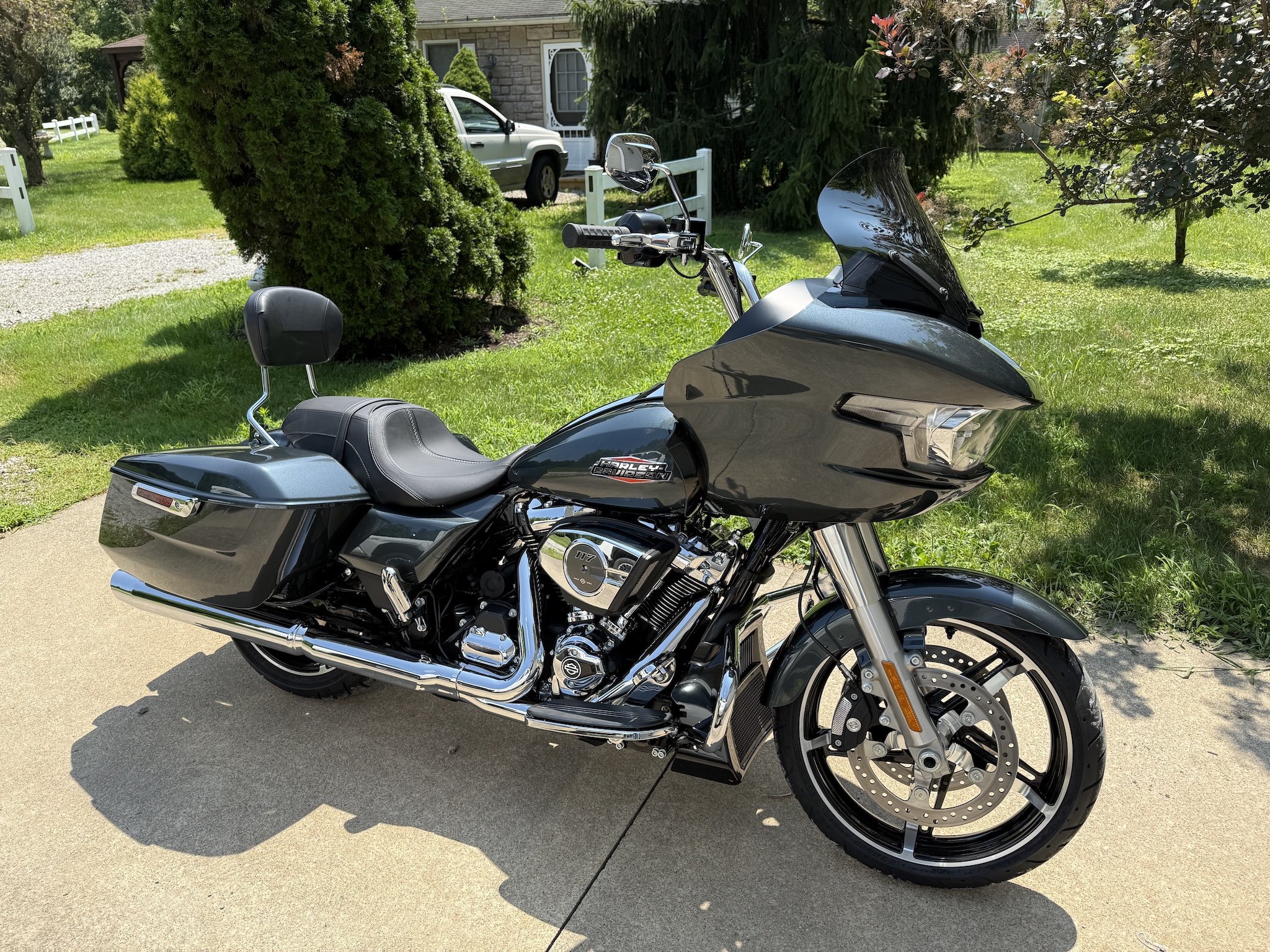-
Posts
18,113 -
Joined
-
Last visited
-
Days Won
242
Content Type
Profiles
Forums
Gallery
Events
Store
Everything posted by Freebird
-
Now here we have some confusion. The hot wire to a switched ignition source is only applicable to some bikes. It was not necessary on the Royal Star Venture. Are you SURE you needed to do that?
- 32 replies
-
I'm running curve 3. I don't think I've ever tried 4 or 5.
-
If you haven't read Lewis's post about the ride to St. Jude, please do so. This will be a great experience for anybody who can make it. As some of you know, or Tail of the Dragon rally that has been organized Lewis for the past 3 years has always served the dual purpose of not only allowing all of us to enjoy getting together, riding and eating but even more importantly, to raise money for St. Jude's. The amount of money has grown each year and I am very proud to be a part of any group that is a part of such an event. It would be great if as many of you as possible could join Lewis at St. Judes to present them the money that was raised. Not only would we be very proud to have any of you there to represent us but you will probably get MUCH more out of it than you can possibly imagine. It truly is an opportunity that you will feel good about afterwards. Please see this thread for all the details. http://www.venturerider.org/forum/showthread.php?t=14760
-
Thanks to a great idea by Eck and his willingness to manage it, I am pleased to announce a new topic area dedicated to free or cheap parts for all our bikes. Please visit the area and read the sticky post there by Eck. Please note, it is a read only area in order to keep the parts lists organized. http://www.venturerider.org/forum/forumdisplay.php?f=101
-
I'm not sure but it looks more like the Tow Pack....
- 16 replies
-
- contraption
- ebay
-
(and 3 more)
Tagged with:
-
I received the following email. "Hey Anybody know of someone losing their leather in Sauk City? A notebook has some addresses from NY and CA. Please contact me @ Sauk Prairie Harley-Davidson. It also has A couple of pins from venture mc, Honorable DC from US Navy Poppies. Thank you Maggie Connor 608-643-3735"
- 1 reply
-
- couple
- harley-davidson
-
(and 3 more)
Tagged with:
-
Buy it, you will love it. Plus, look at the family that comes with all Ventures sold.
-
No problem about posting in the wrong place. We all do it from time to time. As for the lights, there are several rear light bars that folks here have used and I'm sure that some of the members will jump in with their recommendations. Another thing that some of us have added is an assembly for the Harley Road King. Here is a thread on it. Looks like it was MADE for the Venture. http://www.venturerider.org/forum/showthread.php?t=3768
-
I'll be checking with my bank tomorrow to find out why the fee was so high. Maybe because it was a non-USA bank. I don't know if that makes a difference or not.
-
Yes folks...I should have thought it through more before I posted. Money orders, cashier checks, etc. will always be welcome. I realize that not everybody uses PayPal.
-
Well, I just don't think that whoever gave me this check had any intention at all of it bouncing. I know I'm a sucker sometimes but I would prefer to continue giving people the benefit of the doubt. As part of my REAL job, I sometimes have to do collection calls on folks that owe the company that I work for money. This past week I was in southern Ohio for just that purpose. It is a part of my job that I truly hate. This particular person had written us a bad check for over $800.00. Now to show you how much I try to work with people, it was written in early January of '97. That was about 10 months ago. I left the person MANY messages on their answering machine because they would never pick up the phone when I called. I still didn't give up to the moment that I arrived at the cities police department to file charges. I truly did not want to file charges against them. I called last Monday morning as I left my house and left a message that I was on my way to file charges. This happens to be a felony due to the size of the check. I called again an hour later letting them know that I was approximately two hours away and so they still had two hours to call me. Never heard from them. I called again from the parking lot of the police station but again got the machine. Now this is a place of business and I know that somebody was there. So I went into the police station and filed the charges. Very nice detective asked what I wanted and I told him that I just wanted what we were owed. He told me that he would go by and pay them a visit and tell them that they had until Friday to pay before he would file the felony charges with the court. On Thursday we received a money order for the full amount. To this day I've never received a call back or any communications from them. It's like they blame ME for their refusal to pay. Now bear in mind, we are a wholesaler. These people made about a thousand dollars on the $842.00 that they paid us. I know that they got paid because the officer told me that they had actually done a job for the city and it went very well and they WERE paid. Go figure.
-

I'm Home, Alive And Well! (And With A "New" Ride!)
Freebird replied to 86er's topic in Watering Hole
I love the truck. I used to have a '53 GMC. Great old truck. -
OK folks...I want to thank all of you for your suggestions about the type of contest to hold but I have made a decision and it starts NOW. As you know, we are presently seeking photo submissions for the 2008 VentureRider calendar. So, each of you who submits a picture for the calendar will be entered into the drawing to win a $100.00 gift certificate from New Enough. You can go there now and be deciding what you want to spend it on. http://www.newenough.com/ Here is the thread that explains what type of photos needs to be submitted and how to submit them. No whining about "I don't have a digital camera" and etc....if you don't have a camera, I'm sure that somebody you know does. http://www.venturerider.org/forum/showpost.php?p=134864&postcount=12 This contest will run until October 14th which is the deadline for submissions.
-
No, I promise I haven't forgotten. They were out of them but are supposed to be getting some more. I went into two other stores and they didn't even carry motorcycle parts. I PROMISE I will find you one though.
- 4 replies
-
- forgottenrotflrotfl
- freebird
-
(and 1 more)
Tagged with:
-
Folks, this is a hard thing for me to even mention here. I am NOT mad. I understand that bad things happen sometimes to good people. I just want to mention it though because I can't handle this too often. I got my bank statement today and found that a check that one of you sent to me got returned for insufficient funds. This is the second time this has happened. I never mentioned it the first time because I really just hate talking about this kind of thing. It has to be said though. I'm not even sure who the check came from. I will contact my bank on Monday and try to find out. I THINK it was for a donation to the site. While I know it was made with good intentions, the bottom line is that the donation ended up costing me $60.00. That is what my bank charged me for the depositing the bad check. I think it is nuts that my bank charged me $60.00 for a bad check from somebody else and rest assured I will be talking to them about that also. I'm sure it will do no good though. The other one was a couple of years ago but the end result is that I've lost $120.00 due to these two checks. I'm sorry to say that I will probably no longer accept checks for any donations, patches, parts, anything else. It's just not a chance that I wish to take any longer. Sorry it had to be said. I know that the person who sent the check certainly had the best intentions and would never have let it happen on purpose.
-
Mike, I agree that it feels small compared to the RSV. I think it would be comfortable with some highway pegs though. As for the Streetglide, one of the guys that rode with us to Fort Collins this year was riding one. It was a rental due to a charging problem with his Valk on the morning that we were leaving. He really liked it. It seemed especially small to me though.
-

Say does anybody know what is happening with Chat?
Freebird replied to Animal's topic in Watering Hole
I just tried it also. Opened right up for me.- 4 replies
-
- confused24
- happening
-
(and 3 more)
Tagged with:
-
Mine had a red and a blue wire also. One was for running lights and the other for brake lights. I wonder if the one that you got is different and is for running lights only? Check the lamp sockets to see if they are dual or single element.
-
That is going to be very cool...very unique. Can't wait to see it when you are finished.
-
Here is a pic of the Shadow that I had with the Memphis Fats.
-
I can't answer for anybody here riding a Road Star but I had one back when I owned a Honda Shadow Ace. Mine was actually a Memphis Fats and it was an excellent shield.
-
My only advise would be to find a nice '86-'93 model. That way you will prevent having to deal with any second gear issues or frame issues that sometime show up on the '83 models. Otherwise, VERY good choice.
- 8 replies
-
- boards
- comfortable
-
(and 3 more)
Tagged with:

